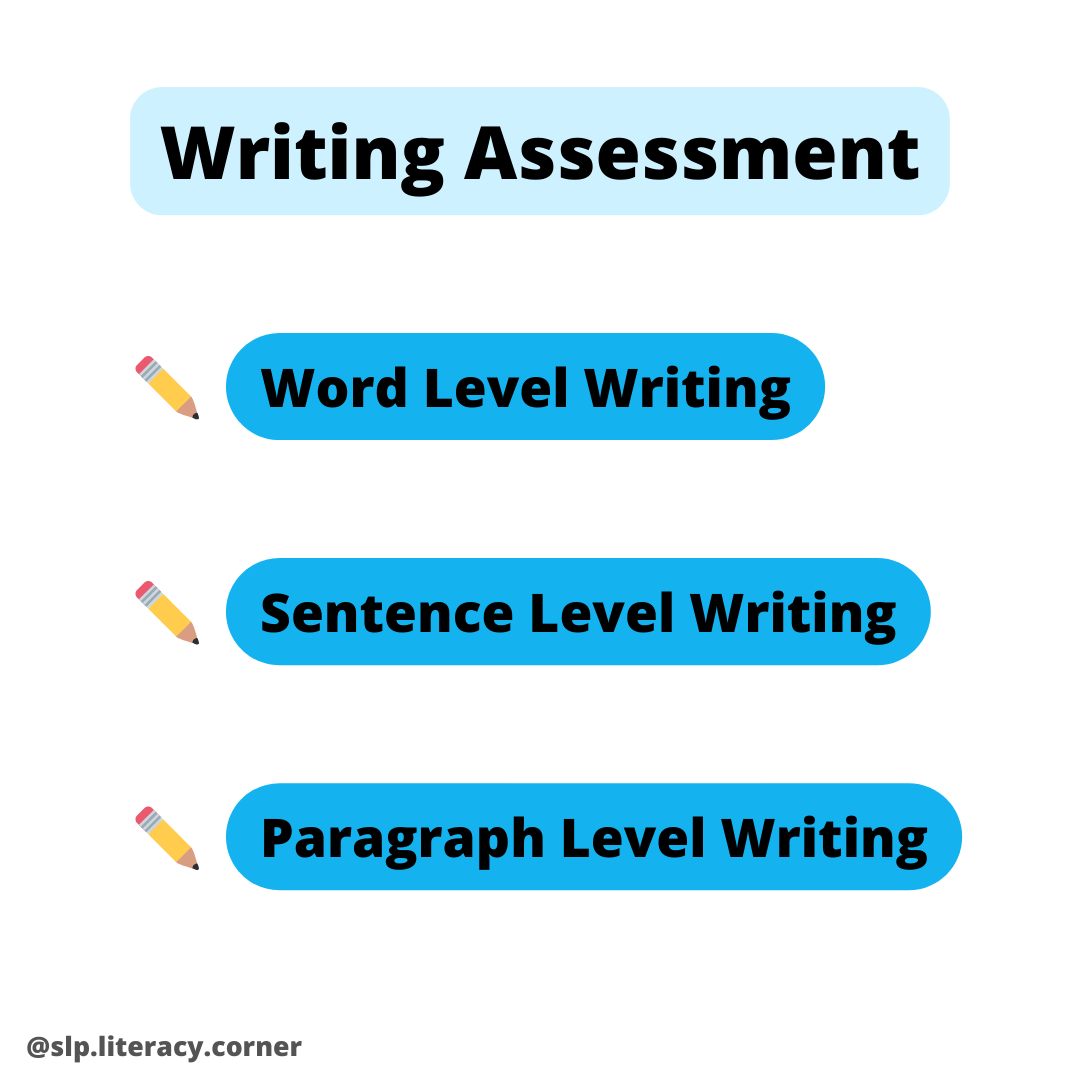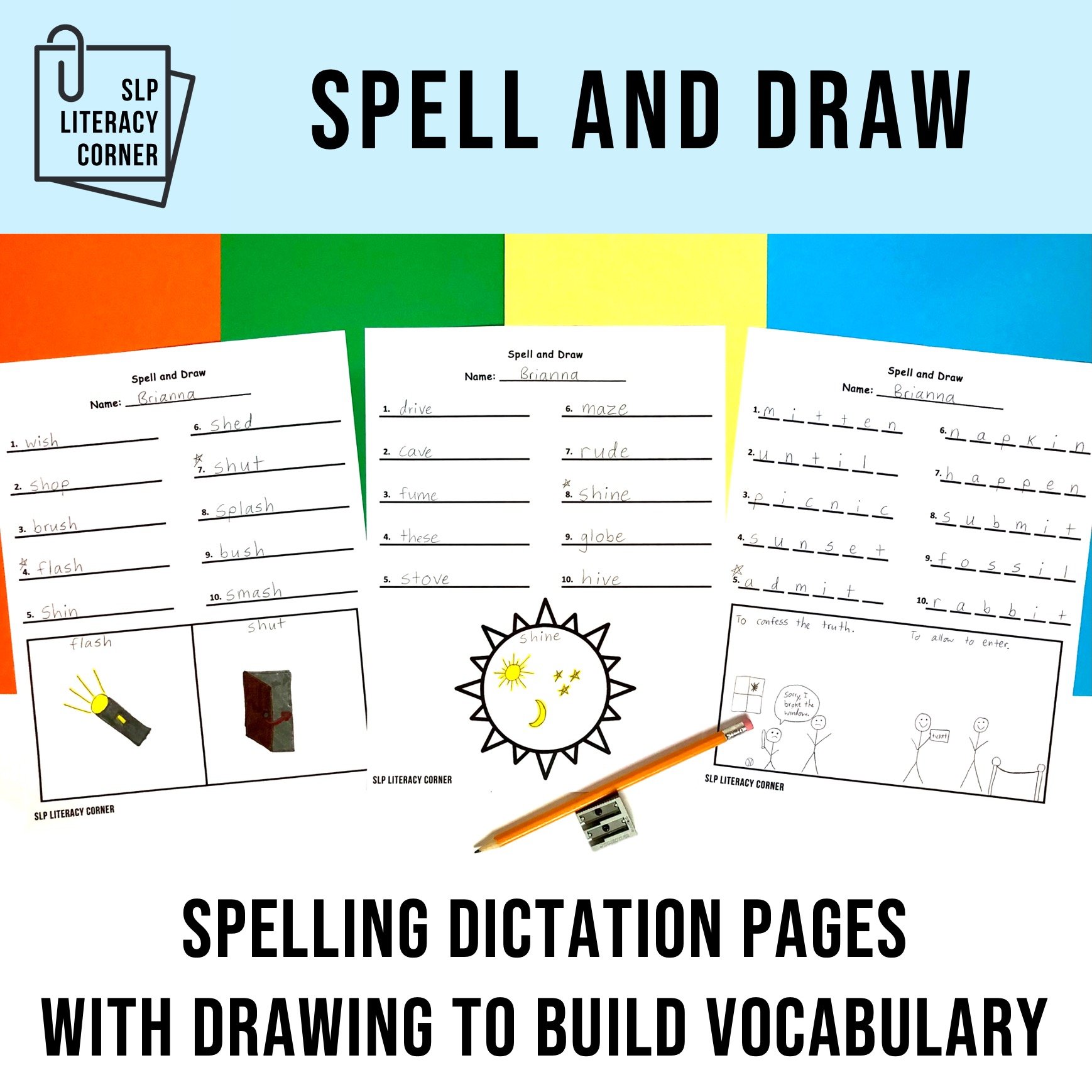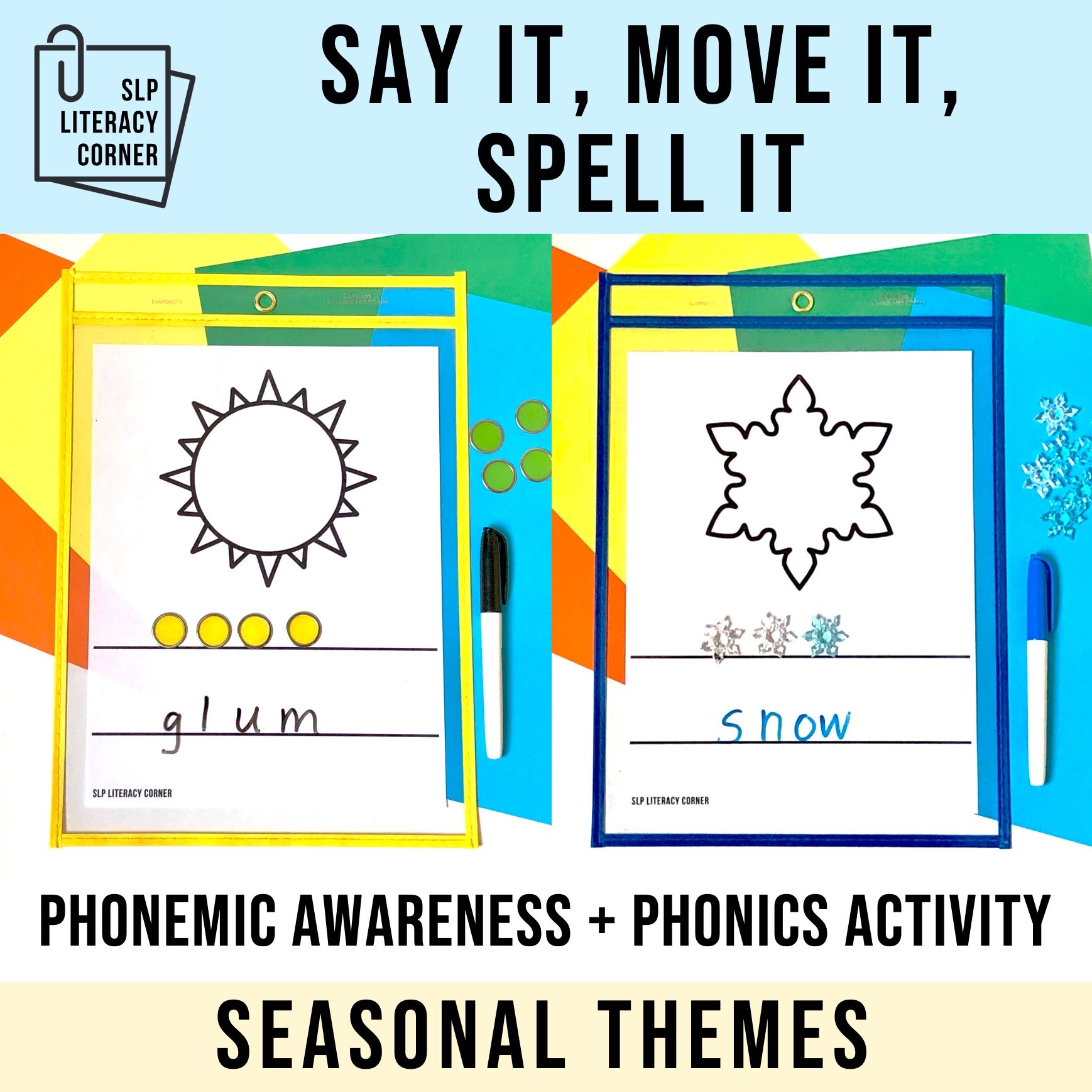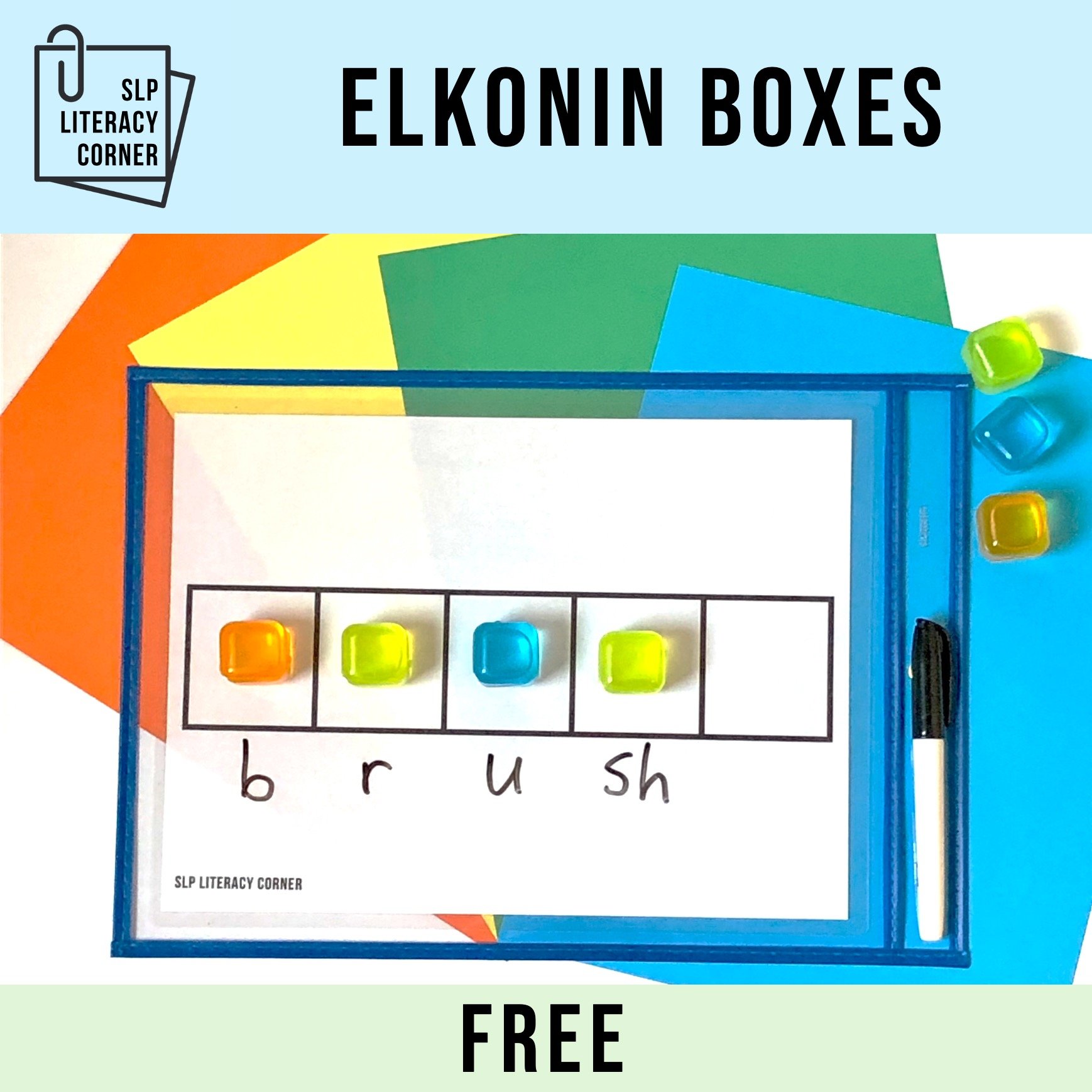Writing Assessment
Written by: Brianna Guild, MHSc SLP(C)
Date: November 16, 2023
Updated: April 18, 2025
Writing assessments allow educators to better understand a student’s current spelling and writing abilities so that they can provide instruction specific to the student’s needs. Instruction should always be informed by data, such as that obtained from assessments. Here’s what I include in a thorough writing assessment:
✏️ 1. Word Level Writing
- First, I assess a student’s ability to spell at the word level. This includes their ability to spell regular phoneme-grapheme correspondences and irregular or “heart” words (some part of the word has to be “learned by heart”).
- I follow a speech-to-print approach to literacy instruction, so I start by assessing a student’s knowledge of the basic/initial code (e.g., one letter represents one sound) and increasingly complex word structures (e.g., VC → CVC → VCC → CVCC → CCVC → CCVCC). If students demonstrate a strong understanding of the basic code, I then assess their knowledge of the advanced/extended code, which includes concepts such as:
A sound can be represented by multiple letters (e.g., ai, igh, eigh).
A sound can be represented by more than one spelling (e.g., the sound /eɪ/, commonly referred to as “long a”, can be represented by the spellings a, ai, ay, a_e, ey, eigh).
A spelling can represent more than one sound (e.g., the spelling ea can represent the sound /i/ as in eat, /ɛ/ as in bread, or /eɪ/ as in steak).
- According to Wiley Blevins in A Fresh Look at Phonics, here are reasonable phonics expectations (mainly categorized by syllable types) by grade:
Kindergarten: short vowels, consonants, ck, double final consonants (ff, ll, ss, zz)
Grade 1: consonant clusters, digraphs, silent e, open, vowel teams, r-controlled
Grade 2: stable final, multisyllabic and compound words
- For irregular or “heart” words, I typically assess words based on the sequence provided by UFLI Foundations.
✏️ 2. Sentence Level Writing
- Second, I assess a student’s ability to write sentences. I have students write three sentences: 1) copy a sentence that I write, 2) write a sentence that I dictate, and 3) independently compose their own sentence.
- This format comes from The 21 Days of Writing Challenge by Lyn Stone. The reasoning behind these three levels is that copying allows student to focus on letter formation only, dictation works on letter formation and spelling (transcription), and composition works on text generation and transcription. Including these three levels in my assessment allows me to better understand where a student struggles (letter formation, spelling, generation).
- After the student writes their sentences, I check that they used capitals and punctuation appropriately, their writing is organized (good letter formation, appropriate spaces between words, sentences make sense/are grammatically correct), and their spelling is correct. I use a COPS editing checklist to assess student writing, and teach students how to edit their written work.
✏️ 3. Paragraph Level Writing
- Third, I assess a student’s ability to write a paragraph, if this is an appropriate expectation for the student based on their sentence level writing abilities.
- I typically give my students two options for a topic, and ask that they write at least a five sentence paragraph. I also time how long it takes them to write the paragraph to get a baseline measure of their writing rate (number of words written correctly per minute).
- After the student writes their paragraph, I check that they included a topic sentence, at least 3 body sentences, and a conclusion sentence. I also check capitals, organization, punctuation, and spelling.
Finally, I use all these writing samples to get a big picture of the student’s writing fluency, content, conventions, syntax, and vocabulary. For more, check out Simple Ways to Assess the Writing Skills of Students with Learning Disabilities by Stephen Isaacson.
Join the SLP Literacy Corner email newsletter to get access to exclusive free resources, including spelling screeners (syllable types and irregular words) to help assess students’ word level writing skills. Sign up here!
If you're looking for spelling activities, check these out:
References:
Blevins, W. (2016). A Fresh Look at Phonics: Common Causes of Failure and 7 Ingredients for Success. Corwin Press Inc.
Lifelong Literacy (2023). Free Downloads: The 21 Day Writing Challenge. https://lifelongliteracy.com/free-downloads/
Isaacson, S. (n.d.). Simple Ways to Assess the Writing Skills of Students with Learning Disabilities. https://www.readingrockets.org/topics/assessment-and-evaluation/articles/simple-ways-assess-writing-skills-students-learning






